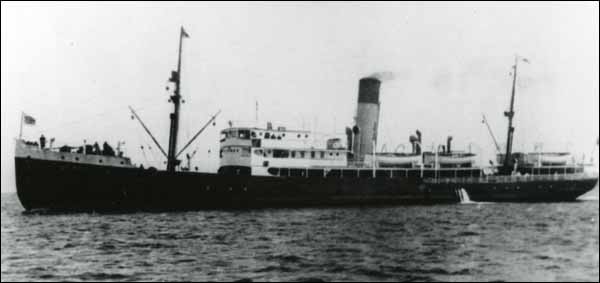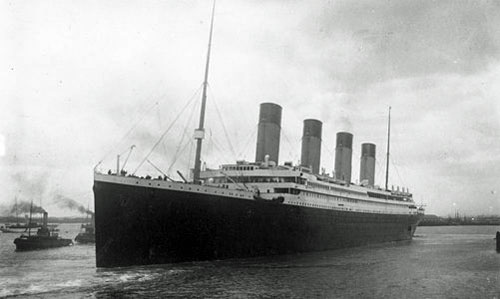Macleans
Acadians Celebrate 250 Years of Survival
This article was originally published in Maclean’s magazine on August 2, 2004. Partner content is not updated.

Enter your search term
Signing up enhances your TCE experience with the ability to save items to your personal reading list, and access the interactive map.
Create AccountMacleans
This article was originally published in Maclean’s magazine on August 2, 2004. Partner content is not updated.
"https://www.thecanadianencyclopedia.ca/images/tce_placeholder.jpg?v=e9dca980c9bdb3aa11e832e7ea94f5d9" // resources/views/front/categories/view.blade.phphttps://www.thecanadianencyclopedia.ca/images/tce_placeholder.jpg?v=e9dca980c9bdb3aa11e832e7ea94f5d9

Article
The Council of Twelve was established 1719 in Nova Scotia to advise the governor, deliberate on bills in the legislature's upper house and act as a civil court of appeal. Councillors were appointed by the governor and served for life. Until the 1750s the council was dominated by military officers.
"https://www.thecanadianencyclopedia.ca/images/tce_placeholder.jpg?v=e9dca980c9bdb3aa11e832e7ea94f5d9" // resources/views/front/categories/view.blade.phphttps://www.thecanadianencyclopedia.ca/images/tce_placeholder.jpg?v=e9dca980c9bdb3aa11e832e7ea94f5d9

Article
Hector, the ship which carried 178 Scottish immigrants to the Pictou area of northern Nova Scotia in 1773. Pictou was located on the "Philadelphia Plantation," an 81 000 ha tract granted to 14 Scots proprietors and settled desultorily since 1767.
"https://d3d0lqu00lnqvz.cloudfront.net/media/media/a0a529f1-d15d-4956-b0be-6b66feaa1bd1.jpg" // resources/views/front/categories/view.blade.phphttps://d3d0lqu00lnqvz.cloudfront.net/media/media/a0a529f1-d15d-4956-b0be-6b66feaa1bd1.jpg

Article
Acadia’s history as a French-speaking colony stretches as far back as the early 17th century. The French settlers who colonized the land and coexisted alongside Indigenous peoples became called Acadians. Acadia was also the target of numerous wars between the French and the English. Ultimately, the colony fell under British rule. Many Acadians were subsequently deported away from Acadia. Over time, as a British colony and then as part of Canada, Acadians increasingly became a linguistic minority. Nonetheless, Acadians have strived to protect their language and identity throughout time.
"https://d3d0lqu00lnqvz.cloudfront.net/media/media/66c056b0-bee3-47a2-9680-5d5a50b5e7eb.jpg" // resources/views/front/categories/view.blade.phphttps://d3d0lqu00lnqvz.cloudfront.net/media/media/66c056b0-bee3-47a2-9680-5d5a50b5e7eb.jpg

Article
Confirmed as British by the Treaty of Utrecht in 1713, the peninsula of Nova Scotia was neglected until 1749 - a period of "phantom rule" and "counterfeit suzerainty.
"https://d3d0lqu00lnqvz.cloudfront.net/media/media/12f25a44-2508-4e64-9dd1-8eb4b212345d.jpg" // resources/views/front/categories/view.blade.phphttps://d3d0lqu00lnqvz.cloudfront.net/media/media/12f25a44-2508-4e64-9dd1-8eb4b212345d.jpg

Editorial
The following article is an editorial written by The Canadian Encyclopedia staff. Editorials are not usually updated.
"https://d3d0lqu00lnqvz.cloudfront.net/media/media/2756e679-0a69-460f-a9df-a12d63bd1a22.png" // resources/views/front/categories/view.blade.phphttps://d3d0lqu00lnqvz.cloudfront.net/media/media/2756e679-0a69-460f-a9df-a12d63bd1a22.png

Article
According to legend, Sheila Na Geira (also spelled NaGeira and Nagira) was an Irish aristocrat or princess who, 300 or 400 years ago, while travelling between France and Ireland, was captured by a Dutch warship and then rescued by British privateers. She fell in love and was married to one of the privateers, Lieutenant Gilbert Pike. They settled at western Conception Bay. By the early 20th century, the legend was being told as part of Newfoundland’s oral tradition, and has since been popularized by poems, novels, scholarly articles and several plays.
"https://d3d0lqu00lnqvz.cloudfront.net/dreamstime_resize_33120989-2.jpg" // resources/views/front/categories/view.blade.phphttps://d3d0lqu00lnqvz.cloudfront.net/dreamstime_resize_33120989-2.jpg

Article
The Quidi Vidi Battery was built in 1762 by the French. The French attacked the ST JOHN'S, Nfld, area in one of the last campaigns of the SEVEN YEARS' WAR, capturing and burning many settlements around Trinity and Conception bays. They then erected the battery to defend their newly won territory.
"https://www.thecanadianencyclopedia.ca/images/tce_placeholder.jpg?v=e9dca980c9bdb3aa11e832e7ea94f5d9" // resources/views/front/categories/view.blade.phphttps://www.thecanadianencyclopedia.ca/images/tce_placeholder.jpg?v=e9dca980c9bdb3aa11e832e7ea94f5d9

Article
In 1867 many Nova Scotians were reluctant to endorse CONFEDERATION. In the elections of Sept 1867 anti-Confederates captured 36 of 38 seats in the local legislature, and 18 of 19 seats in the Dominion Parliament.
"https://www.thecanadianencyclopedia.ca/images/tce_placeholder.jpg?v=e9dca980c9bdb3aa11e832e7ea94f5d9" // resources/views/front/categories/view.blade.phphttps://www.thecanadianencyclopedia.ca/images/tce_placeholder.jpg?v=e9dca980c9bdb3aa11e832e7ea94f5d9

Article
The SS Caribou was a passenger and train ferry that operated in the Cabot Strait between Port aux Basques, Newfoundland and North Sydney, Nova Scotia. On 14 October 1942, the German submarine U-69 sank the vessel, causing the worst loss of life in Canadian waters during the Second World War.
"https://d3d0lqu00lnqvz.cloudfront.net/media/new_article_images/Caribou/ss-caribou-1920-1940.jpg" // resources/views/front/categories/view.blade.phphttps://d3d0lqu00lnqvz.cloudfront.net/media/new_article_images/Caribou/ss-caribou-1920-1940.jpg

Editorial
Soldiers rounding up terrified civilians, expelling them from their land, burning their homes and crops ‒ it sounds like a 20th century nightmare in one of the world's trouble spots, but it describes a scene from Canada's early history, the Deportation of the Acadians.
"https://d3d0lqu00lnqvz.cloudfront.net/Acadian still.png" // resources/views/front/categories/view.blade.phphttps://d3d0lqu00lnqvz.cloudfront.net/Acadian still.png

Article
The 1917 Halifax Explosion is well-known as the biggest human-made explosion in the pre-atomic era. The event was also the largest mass-blinding in Canadian history and it played a crucial role in the founding of the Canadian National Institute for the Blind (CNIB). (See also Blindness and Visual Impairment.)
"https://d3d0lqu00lnqvz.cloudfront.net/media/media/f30038ca-9247-42a2-acb4-93cafefda81e.jpg" // resources/views/front/categories/view.blade.phphttps://d3d0lqu00lnqvz.cloudfront.net/media/media/f30038ca-9247-42a2-acb4-93cafefda81e.jpg

Editorial
The following article is an editorial written by The Canadian Encyclopedia staff. Editorials are not usually updated.
"https://www.thecanadianencyclopedia.ca/images/tce_placeholder.jpg?v=e9dca980c9bdb3aa11e832e7ea94f5d9" // resources/views/front/categories/view.blade.phphttps://www.thecanadianencyclopedia.ca/images/tce_placeholder.jpg?v=e9dca980c9bdb3aa11e832e7ea94f5d9

Editorial
The following article is an editorial written by The Canadian Encyclopedia staff. Editorials are not updated.On 9 October 1867, in Spotted Island Harbour, Labrador, Captain William Jackman secured his vessel ahead of a vicious storm and went ashore to visit his old friend, John Holwell. Before the day ended, events transpired that earned Jackman a place in Newfoundland history — and legend.
"https://d3d0lqu00lnqvz.cloudfront.net/media/media/ab2a7cfb-9c8d-4afb-81e1-d63780c50952.jpg" // resources/views/front/categories/view.blade.phphttps://d3d0lqu00lnqvz.cloudfront.net/media/media/ab2a7cfb-9c8d-4afb-81e1-d63780c50952.jpg

Article
The Royal Mail Ship (RMS) Titanic was a British luxury passenger liner that sank on its maiden transatlantic voyage. At approximately 11:40 p.m. on 14 April, 1912, about 740 km south of Newfoundland, Titanic’s starboard (right) side scraped along an iceberg. The collision ruptured several watertight compartments. Water poured in, but the first lifeboat was not launched until an hour later. Approximately two-thirds of the liner’s passengers and crew died. Titanic’s sinking was one of the worst marine disasters in history and remains firmly embedded in popular culture today.
"https://d3d0lqu00lnqvz.cloudfront.net/media/media/69692e90-db50-4679-992f-989cebf24a69.jpg" // resources/views/front/categories/view.blade.phphttps://d3d0lqu00lnqvz.cloudfront.net/media/media/69692e90-db50-4679-992f-989cebf24a69.jpg
